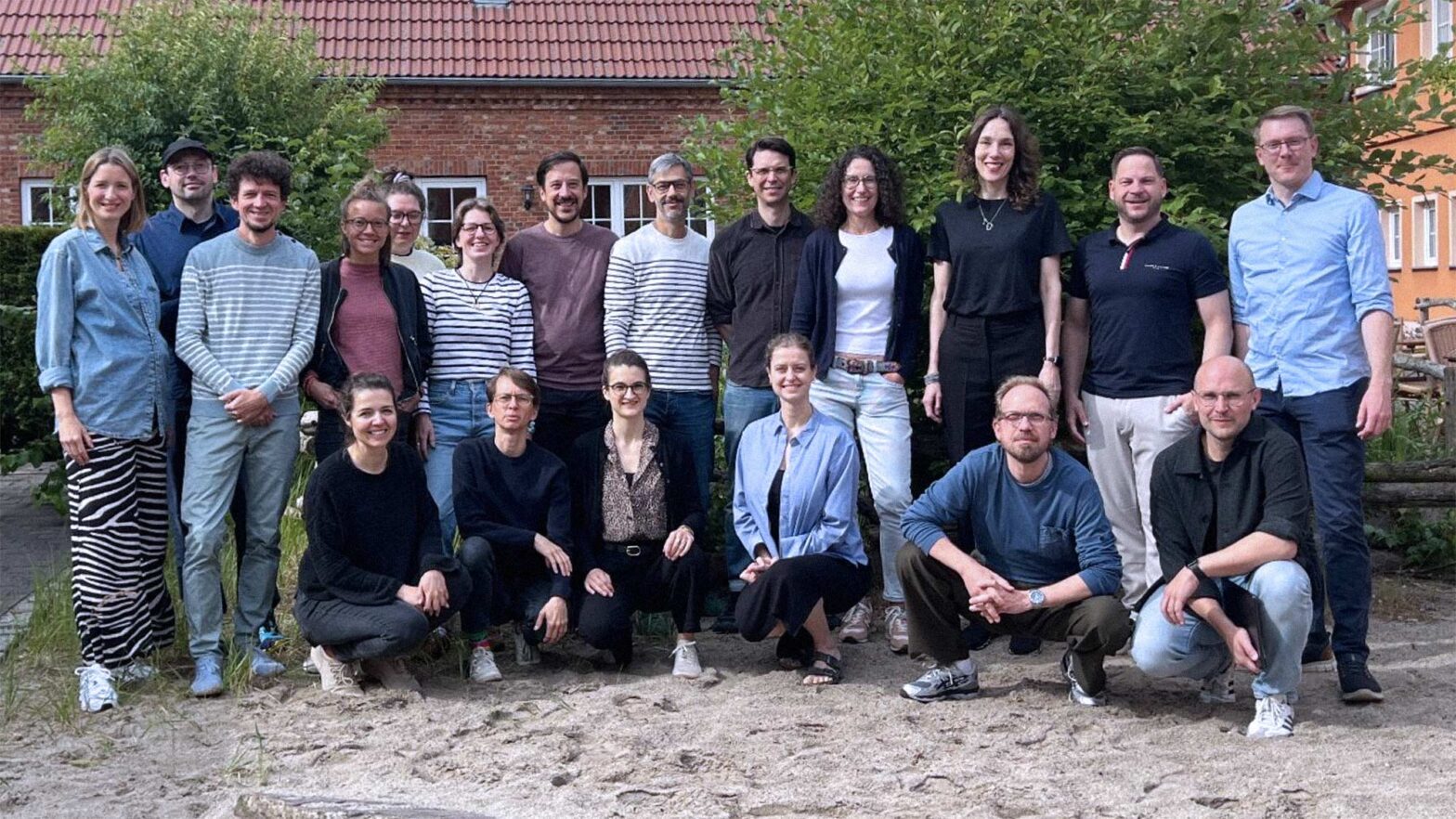I started my working week on a farm. The much-grown leadership team got together for a 2-day offsite.
Dedicating time for strategic thinking and planning
Together with the other 16 members of the extended leadership team, we reviewed our 6-month objectives and then looked forward until the end of the year. The first half of the year, we focused on increasing visibility of DigitalService, improving our project work setup, and addressing scalability challenges proactively. Overall, we scored our homework rather well, but saw various improvement areas regarding how we are working on such objectives together.
For the second half of the year, we will continue to enhance our execution capability, prepare for new project work, and support the onboarding of new colleagues.
A significant change is how we work on those objectives. For each of our three refined objectives, we will have several initiatives. Each initiative is steered by 1 dedicated driver from the leadership team. There will be 12 initiatives overall. These are developed further with the input from people from all parts of the organisation, and a member of the executive team supports them as a sponsor.
The initiative I will drive is an improved project portfolio vision. This work will include refining the project phase definition. Those need to be aligned with the Service Standard and its vocabulary.
Most of the initiatives are linked to the most recent engagement survey results. Some contribute to supporting individuals’ professional growth, others to dealing with workload, and another one to improving how feedback is shared in context.
Catching up with the accessibility monitoring body
On Wednesday afternoon, Marion and I visited the BFIT, the Federal monitoring body for accessibility of information technology. It was our second formal gathering after regularly meeting at public and private sector accessibility events. This time, we travelled the short journey to their office, which is close to the government district of Berlin.
4 of the growing BFIT team joined, and we spent over 90 minutes giving each other updates and checking for potential overlaps of our work. The focus of their work is in the area of doing formal accessibility checks, advising on accessibility, and reporting about accessibility to other levels of government, including the European Commission.
Throughout our conversation, I finally got a better understanding of their setup, remit, and involvement in other accessibility related initiatives. I asked them about their recently FOI-extracted accessibility reports that an accessibility activist group then published on the internet. I also wanted to know how contractual snippets help government colleagues in charge procure more accessible services. Many of the challenges and various barriers related to more accessible public services are related to awareness, skills, and senior sponsorship.
Commonly, we shared our hopes that certain things would move in a better direction with the help of the new federal ministry for digitalisation and state modernisation. I provided context for the update of the Service Standard and outlined our plans for creating much practical guidance for commissioners, auditors, and digital teams around it.
We left with a much better understanding of each other’s work and saw very tangible areas for collaboration. We discussed increasing the visibility of each other’s work on social media and reconvening in late summer to develop a more detailed plan for collaborating on accessibility guidance for the Service Standard. I am looking forward to working on the material.
Dealing with inaccessible services myself
While still wearing a cast on my broken dominant hand, I continue to rely on assistive technology to manage my work day. As writing with my non-dominant hand is stressful, takes a long time, and isn‘t very legible, I try to avoid writing as much as I can. So when I received a pile of paper forms from the Berufsgenossenschaft, the employers’ mutual insurance association, I asked for a more accessible version.
Through online contact forms, I requested either an online version or a screen-fillable PDF version of the forms. Five working days later, I received a paper letter in the mail telling me that this is not possible, and paper is the only option. I would be given more time to fill out these forms, though. The response is ironic, given that the association’s primary role is to handle work-related accident and injury claims. Hence, broken arms are not too unlikely to occur regularly.
Extra #FixTheForms entry: “Was another person or animal involved in the accident?” much after “Was another vehicle involved?”—asked by the employers’ mutual insurance association, followed by “What is the name and the address of the person or the animal owner?” Some decency, #Berufsgenossenschaft
— Martin Jordan (@martinjordan.com) July 6, 2025 at 11:20 PM
[image or embed]
I also explored other non-digital parts of the German health system. After my X-rays could only be handed over to me on a CD burned for me at the hospital during an additional visit, I managed to extract the images and upload them into my digital healthcare file. The digital healthcare file is now available on smartphones as a native app in a secure vault. While GP offices do not have to upload the data to the file, patients can add data manually themselves, which is what I did.
What’s next
Next week will be a short week for me. I’ve taken Thursday and Friday off for travelling and vacation in nature.

